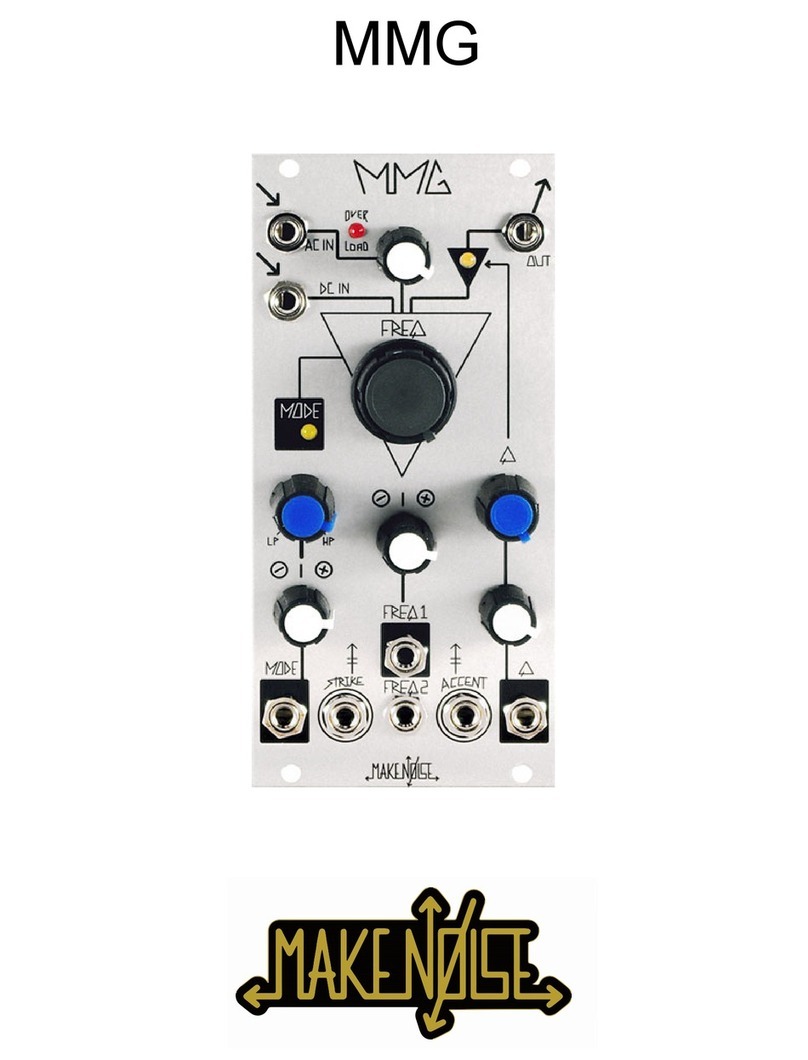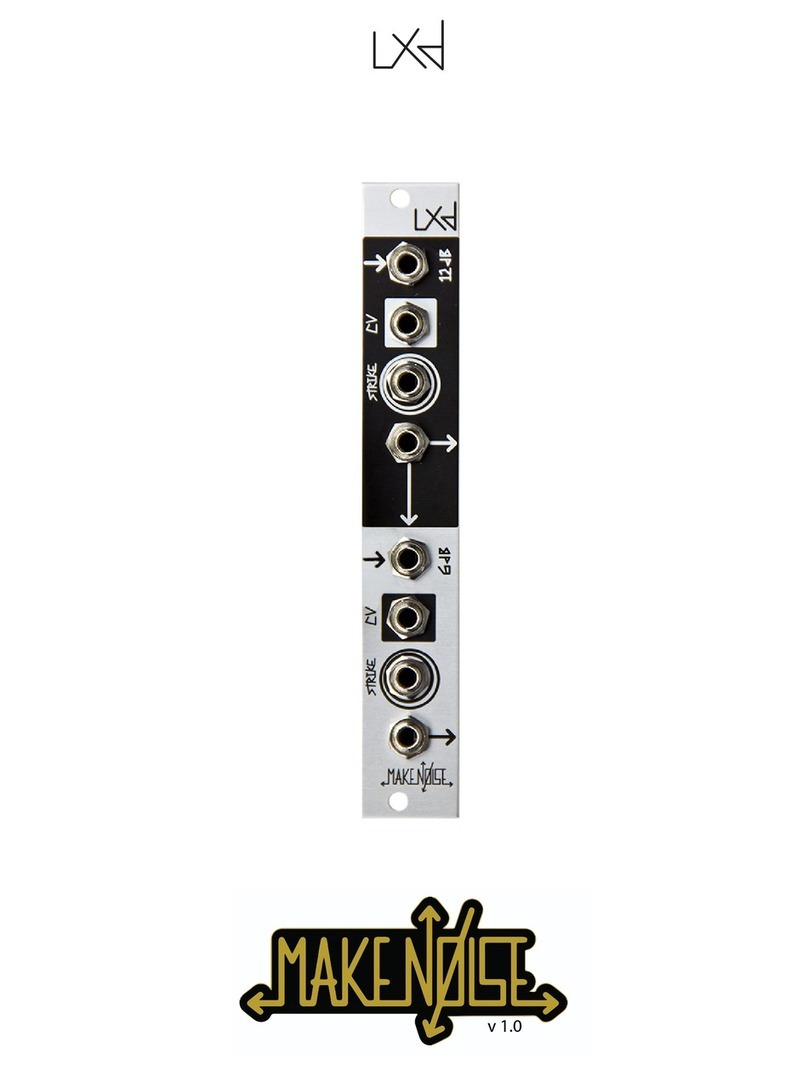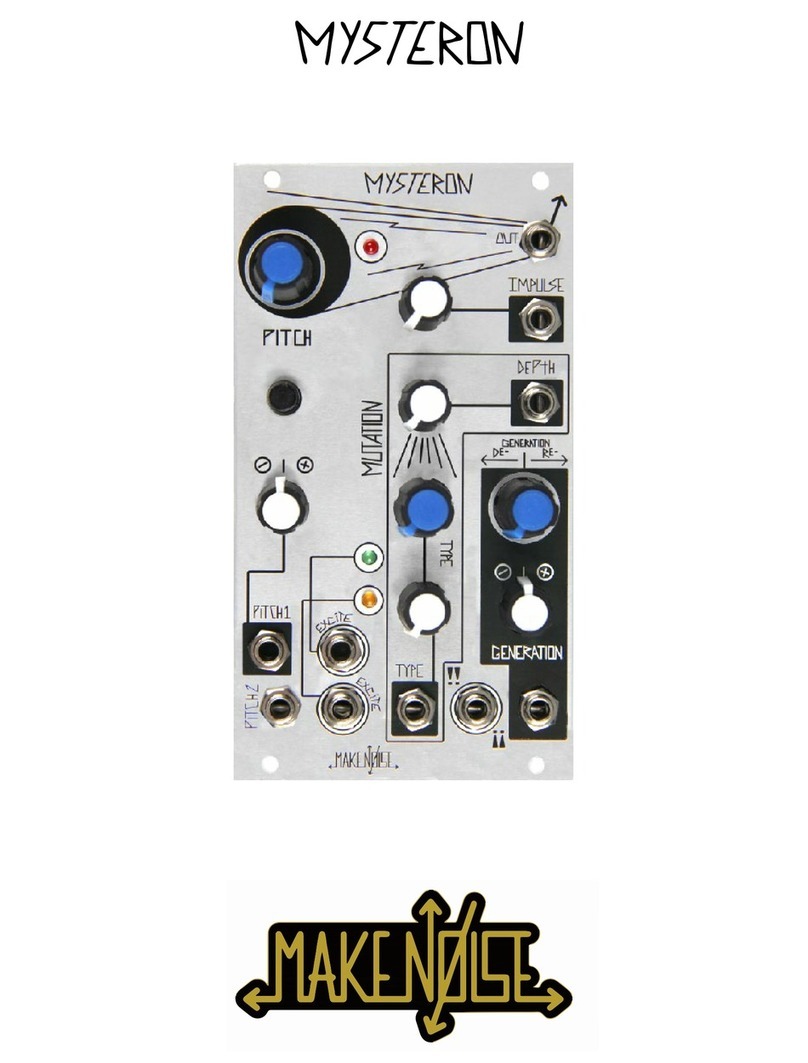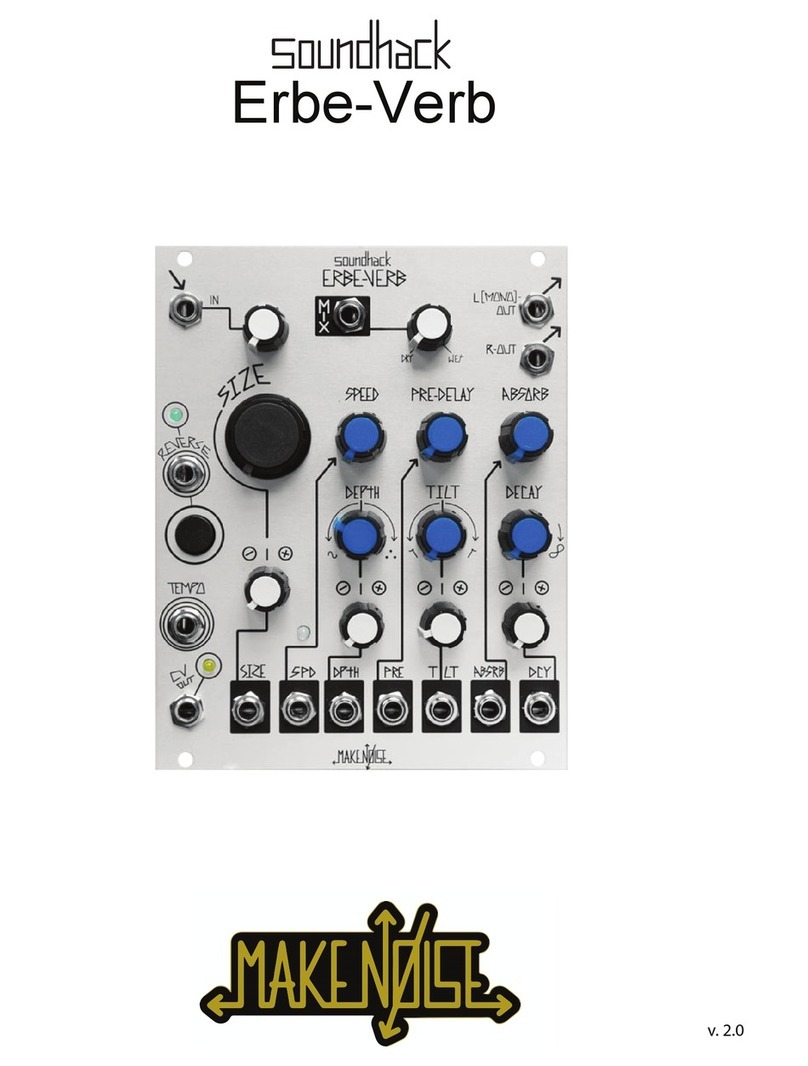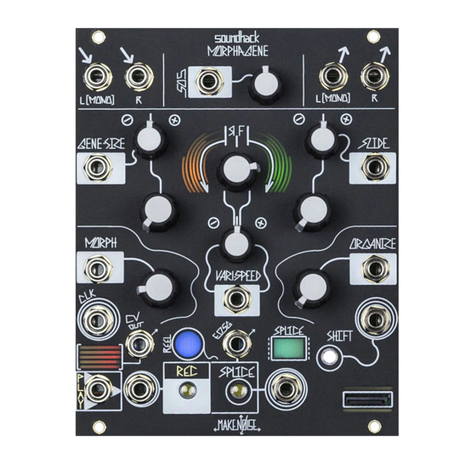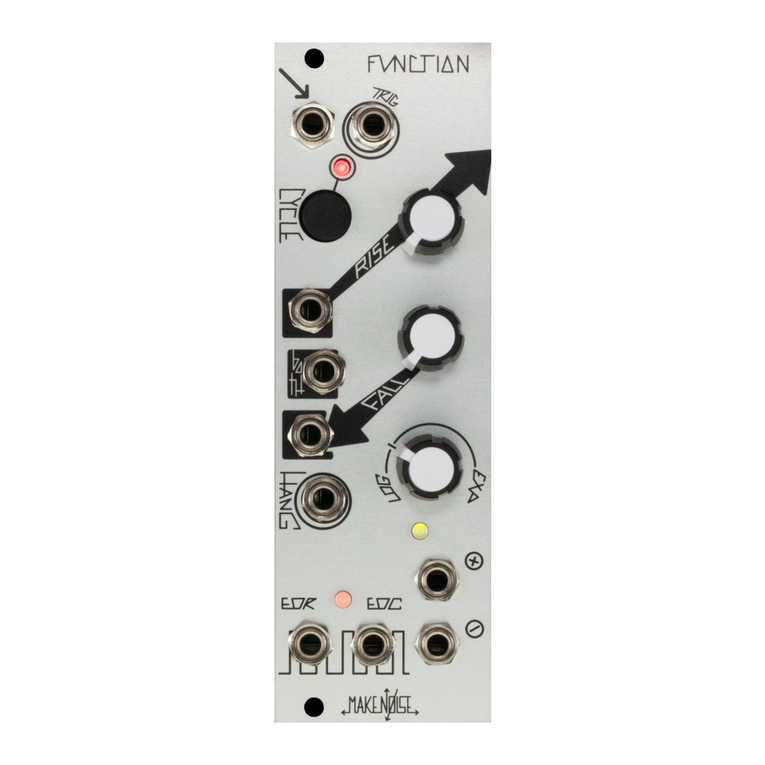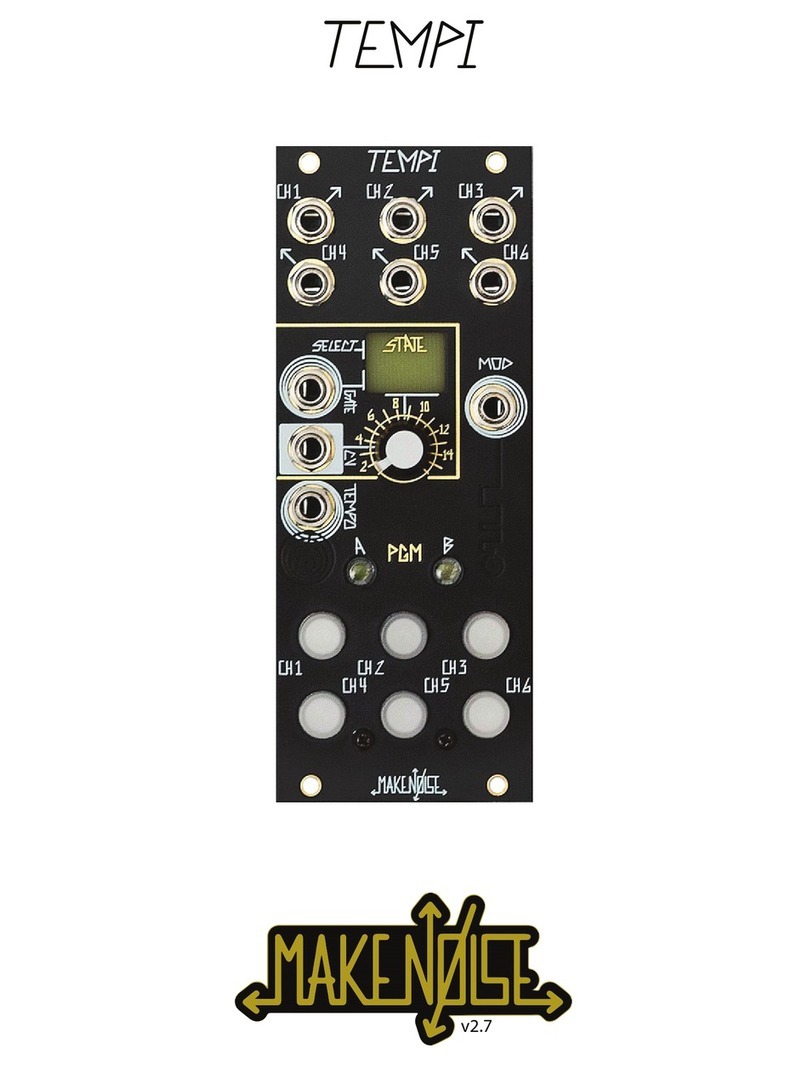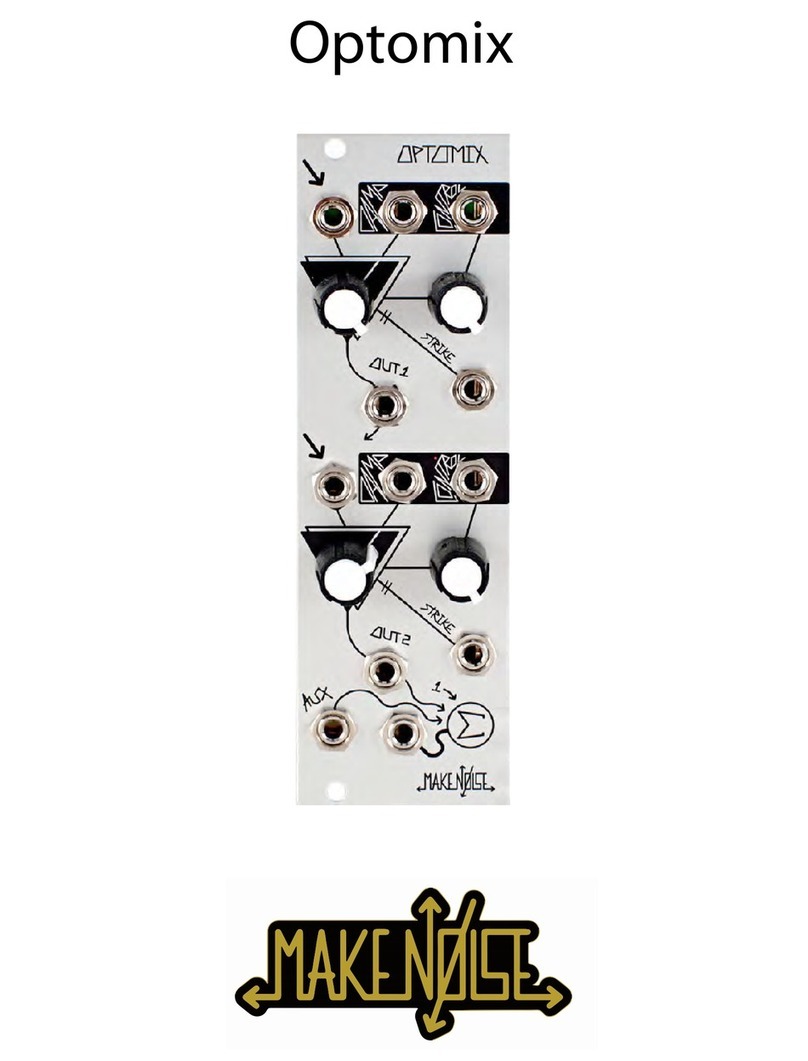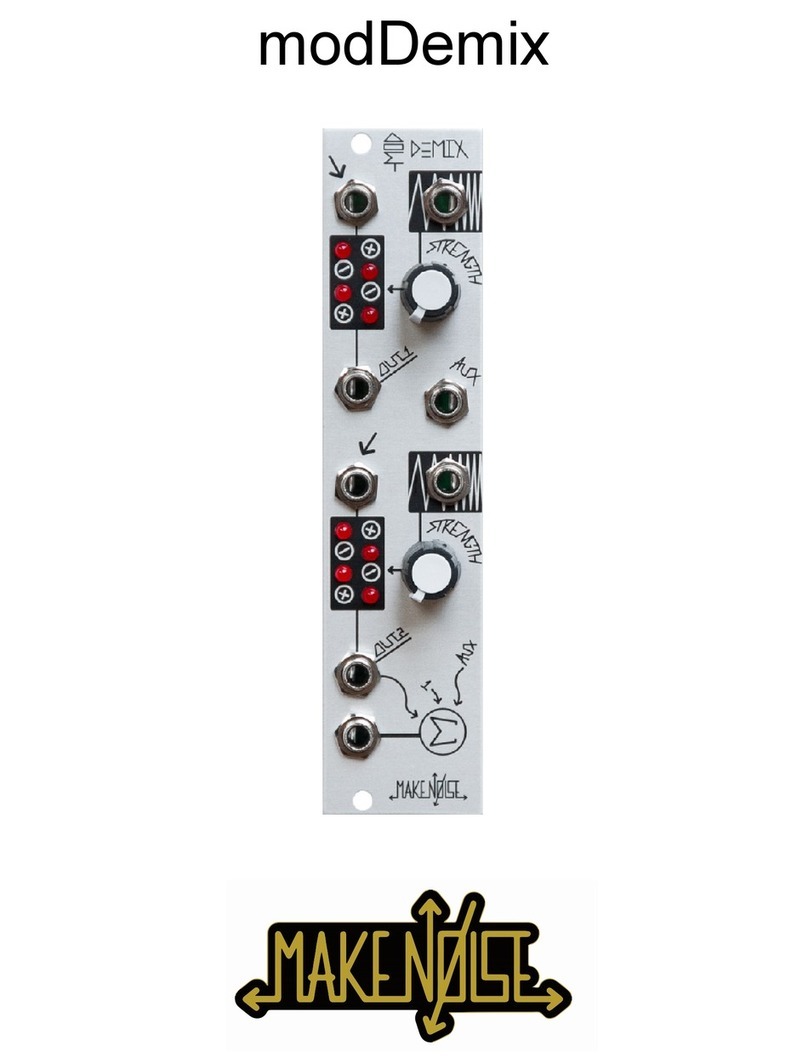
Complex Waveforms through Frequency Modulation and SYNC:
On the DPO both VCOs are capable of generating complex and harmonically rich waveforms. This is
accomplished through the use of FM and HARD SYNC on VCO A, and FM and Timbre Shaping on VCO B.
FM Bus
The internal FM bus is hardwired for SINE wave in both directions and makes use of the Normalization
Switch found on the mini-jacks, so with nothing patched to the Linear and/ or Expo FM inputs the associated
attenuator sets the final index of FM applied to each destination. As you increase the Index Level, the Ampli-
tude of VCO A Sine Bused to VCO B Linear FM and Expo FM attenuators is increased. At the same time the
Amplitude of VCO B Sine Bused to VCO A Linear FM and Expo FM attenuators is increased. Therefore you
could have different amounts of Linear and Expo FM in BOTH directions, all at once.At greater than 90%
Index, all of the FM bus lines (Linear, Expo for both VCOs) go into overdrive when the associated attenua-
tors are set to beyond about 80%. The FM overdrive combined with the Bi-Directional Dynamic FM results in
some extreme Circular FM capabilities. These sounds will get out of hand quickly. The key to controlled FM
within the DPO is attenuation since setting the Index to 100% really does push the circuit to its limits.
VCO A core behavior
With none of the LEDs lighted VCO A operates as a Standard Triangle Core oscillator. When performing FM
and Audio Rate modulations of Timbre parameters there will be greater chance for error in the frequency
ratios. This is not always a bad thing. These errors manifest themselves in a looser interpretation of the ratio
programmed, making each note have subtle differences.
The BLUE LED indicates LOCK, an extremely weak synchronization of VCO A to VCO B where as VCO A
approaches an integer of VCO B frequency VCO A will reset to match VCO B and thus small tuning errors
will be corrected. LOCK is useful for cleaning up FM patches where VCO A is acting as the modulator and
VCO B is the carrier (the signal that is heard), as well as audio rate modulation of the VCO B Timbre param-
eters (via the MOD Bus). LOCK will not impart much change in the timbre of VCO A. It will not introduce
strong harmonics. It is mostly used when VCO A is the modulating signal in an FM patch.
The PINK LED indicates Hard SYNC of VCO A to VCO B where VCO B will restart the period of VCO A at
each cycle so they will have the same base frequency. SYNC will introduce strong harmonics to VCO A.
SYNC is achieved when VCO A Frequency is HIGHER then that of VCO B. The timbre of VCOA may be
altered by varying it’s frequency against that of the Master Frequency set by VCO B. Slow modulation of
VCO A Frequency, such as an envelope or LFO patched to VCO A EXPO CV IN, will result in sweeping of
harmonics. The best results are achieved by setting VCO B to at least 100hz (aroundA2) and sweeping
VCO A Frequency from 100hz up!
The AMBER LED indicates that VCO A is being operated as a Low Frequency Oscillator. This is very useful
with the MOD BUS. Especially the SHAPE and ANGLE parameters respond well to LFO modulation.
VCO B is not directly affected by the VCOA LOCK, SYNC and LFO modes. However, if VCO A is used to
modulate VCO B through the FM or MOD Buses, the resulting modulations will be affected by these
settings.
